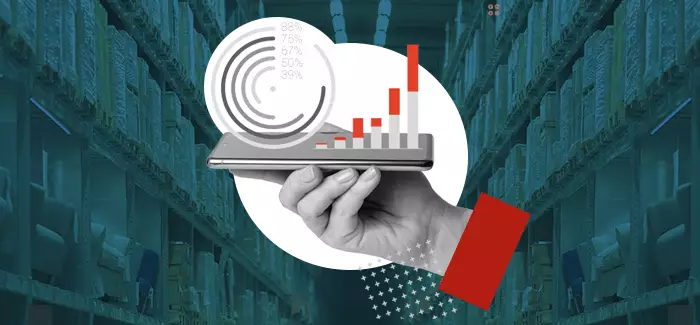Articles > Information Technology > What is a data warehouse?
What is a data warehouse?

Written by Trey Edgington

Reviewed by Kathryn Uhles, MIS, MSP, Dean, College of Business and IT

Businesses use data management systems to store and analyze large amounts of data to gain business insights and improve decision-making. Let’s explore how and where.
Data warehouse defined
Data warehouses store and organize data from a variety of sources. These systems are built to analyze the data they contain, giving businesses the information they need — both historical and current — to help them make better decisions and create stronger strategies. They also give users the ability to manipulate the data into helpful insights.
Which industries and businesses use data warehouses?
Many industries, including education, finance, consumer goods and services, government, and healthcare, use these types of data systems for a range of tasks.
For example, hospitals may use their system to analyze costs across departments to budget for the coming year. Healthcare facilities will also use a digital warehouse to collect information on patient outcomes to conduct research and reach evidence-based conclusions. These results can help improve care by informing providers on how to adjust practices. Cost analysis and organizing patient feedback are a few other ways hospitals can use these systems.
Investment firms, meanwhile, may use such data systems to predict market performance or to analyze potential outcomes of a possible acquisition. Credit departments may use one to observe the spending patterns of cardholders and analyze their risk of defaulting on their credit card.
School systems may use data warehouses for simple tasks like scheduling or more complicated jobs like analyzing test scores based on demographic information. Governments may use one for maintaining tax records or managing and evaluating social programs. Manufacturers may use them for logistics, and companies that provide consumer services can make marketing decisions based on the data analysis.
Key characteristics
Data warehouses are primarily constructed in three tiers for efficient data processing.
The top tier is the user interface or dashboard, which provides reports and analysis based on the business data saved in the warehouse, often through data mining tools.
The middle tier is home to the analytics engine, where the data is accessed and analyzed. The analytics engine, usually an OLAP system, is built to deliver results quickly.
The bottom tier is where data is stored. There are fast storage devices like solid state drives (SSDs) for data that is frequently accessed, or there is “cheap object storage.” The data is moved from these external storage repositories by a process called ETL (extract, transform, load).
The key characteristics include:
- Integrated: Formats, naming conventions and data types are standardized so the system can easily integrate with others.
- Centralized: All data is collected from multiple sources to ensure a complete analysis.
- Organized: Data is categorized by subjects such as marketing or accounting.
What makes data warehouses different from traditional databases
Traditional databases are different in several ways. Organizations use databases for quick queries and transaction processing, which is a method for tracking, processing and recording transactions of goods, services and money changing hands. Digital information warehouses, on the other hand, are typically used for complex analysis.
Databases are often built to focus on a single topic or application. For example, they might hold data for specific customers. They usually contain data that is more up to date, so they are more useful for daily operations. Conversely, data warehouses store data from a broad number of sources — disparate and often historical databases.
Data warehousing seeks to hold information in terabytes, unlike databases that hold smaller datasets in megabytes and gigabytes. Because these more robust systems are designed to manage larger queries, they are considerably faster.
What are the benefits of using a data warehouse?
Because a digital warehouse centralizes information from different systems, departments and platforms, organizations gain a unified view of their data. This “single source of truth” works to remove silos and provide all the data for analysis, not just a single topic. This structure simplifies access and, as we’ve seen above, gives stakeholders the ability to make decisions faster and with more confidence.
The data is cleaned, standardized and stored in one place, improving consistency and reducing errors. Because the data is prepped, cleaned and optimized to provide analysis, teams can run complex reports without bogging down operational systems. The quality of the data is substantial because analytics and reporting only work when the data is trustworthy.
A well-organized warehouse also speeds up analysis. The data is optimized for queries, so users get faster answers with less input at the top tier. Data warehousing preserves historical data as well, allowing teams to track performance and spot trends.
Put another way, key advantages of these digital data systems include:
- Faster, more reliable reporting
- Clean, consistent data across sources
- Visibility into long-term trends
- Support for advanced queries and analysis
Taken as a whole, data warehousing helps teams move from scattered data to actionable insights in less time and with less effort.
Evolution of data storage and analysis
Data warehousing began to take shape in the 1970s as businesses started to look for ways to organize and analyze ever-growing amounts of data. The idea was to create a single repository for reporting and decision-making.
In the coming decade, data warehouses have evolved and become more structured. Data engineers introduced models meant to streamline how data moves from operational systems to analysis environments. This shift helped organizations reduce redundancy in business intelligence efforts.
In the 1990s, many organizations started building data systems piecemeal, developing smaller, focused data collections that they could later add to larger warehouse structures.
The purpose of data warehousing has stayed consistent from the beginning: Bring together data from multiple sources, clean and organize it and make it available for business insights. Growing demand for speed, accuracy and scalability shaped the way data warehousing has evolved.
Today, these warehouses continue to evolve through cloud-based platforms and real-time analytics, allowing businesses to manage more data with greater flexibility and speed.
The impact of big data analytics
Big data has reshaped data warehousing. Traditional systems weren’t built for the scale, speed or variety of modern data, so warehouses have shifted to cloud platforms that support real-time processing.
Analytics expectations have also changed. Data systems now need to support machine learning, forecasting and fast insights — not just storage or basic reports. Today’s warehouses are part of a larger analytics ecosystem, built for scale, speed and smarter decisions.
AI, machine learning and data warehousing
AI and machine learning are increasingly integrated into data warehouses to improve both performance and insight generation. These technologies help accelerate query processing, making it easier to handle complex questions and large volumes of data.
Because they centralize and clean data, they offer a reliable foundation for training AI and ML models. Organizations use this integration to power predictive analytics, detect anomalies like fraud and automate decision-making processes at scale.
Additionally, these integrated systems enhance data governance and compliance by providing better documentation and data lineage.
By combining these capabilities, such systems become active engines for advanced, AI-driven insights. As AI and ML technologies continue to evolve, their integration with data warehouses will likely bring even more transformative capabilities to businesses.
Warehouses in the cloud
A cloud warehouse is a scalable, centralized, internet-hosted platform that allows businesses to store, manage and analyze structured and semistructured data from multiple sources. These platforms are built for speed, flexibility and analytics at scale.
Key features and advantages of cloud warehouses include:
- Elastic scalability: Resources adjust automatically to handle changing demand.
- Separation of storage and computing: Processing and storage can scale independently.
- Centralized access: Multiple data sources reside in one place for unified analysis.
- Faster deployment: Quicker to set up than traditional systems, accelerating access to insights.
- Lower upfront cost: Operates on a subscription model, reducing capital expense.
- Supports modern analytics: Easily integrates with AI and ML tools for advanced use cases.
Compared to on-premises systems, cloud storage requires far less infrastructure management. Cloud service providers handle hardware, maintenance and upgrades, not internal teams.
On-premises solutions often need significant time and investment to expand, while cloud platforms scale instantly based on client needs. Cloud systems are much more accessible, making it easier for distributed teams to securely access data from anywhere.
Some advantages of using an on-premises system could include having more control over data and data security, and setting up specific compliance measures. Another benefit could be storage capabilities.
Data warehouses are just one thing you'll learn about in an IT program
Organizations of all sizes use data warehouses to store and analyze vast swaths of data to make informed business decisions with speed and precision. If you’re interested in learning about technology like this, University of Phoenix offers the following online technology degrees:
Learn more about the online technology programs at University of Phoenix.

ABOUT THE AUTHOR
Trey Edgington holds a Master of Arts in creative writing from the University of North Texas, and his short fiction has been published in several literary journals. His professional journey also includes more than 15 years of experience in higher education and healthcare marketing. Over the course of his career, he has held such roles as adjunct instructor of English, senior content editor & writer, and content and SEO manager. Most recently, he has taken on the role of generative AI language consultant.

ABOUT THE REVIEWER
Currently Dean of the College of Business and Information Technology, Kathryn Uhles has served University of Phoenix in a variety of roles since 2006. Prior to joining University of Phoenix, Kathryn taught fifth grade to underprivileged youth in Phoenix.
This article has been vetted by University of Phoenix's editorial advisory committee.
Read more about our editorial process.
Get your free IT Program Guide
Learn how 100% of our IT degree and certificate programs align with career-relevant skills.
Get your free IT program guide. Please enter your first and last name.
Thank you
Download your pdf guide now. Or access the link in our email.


